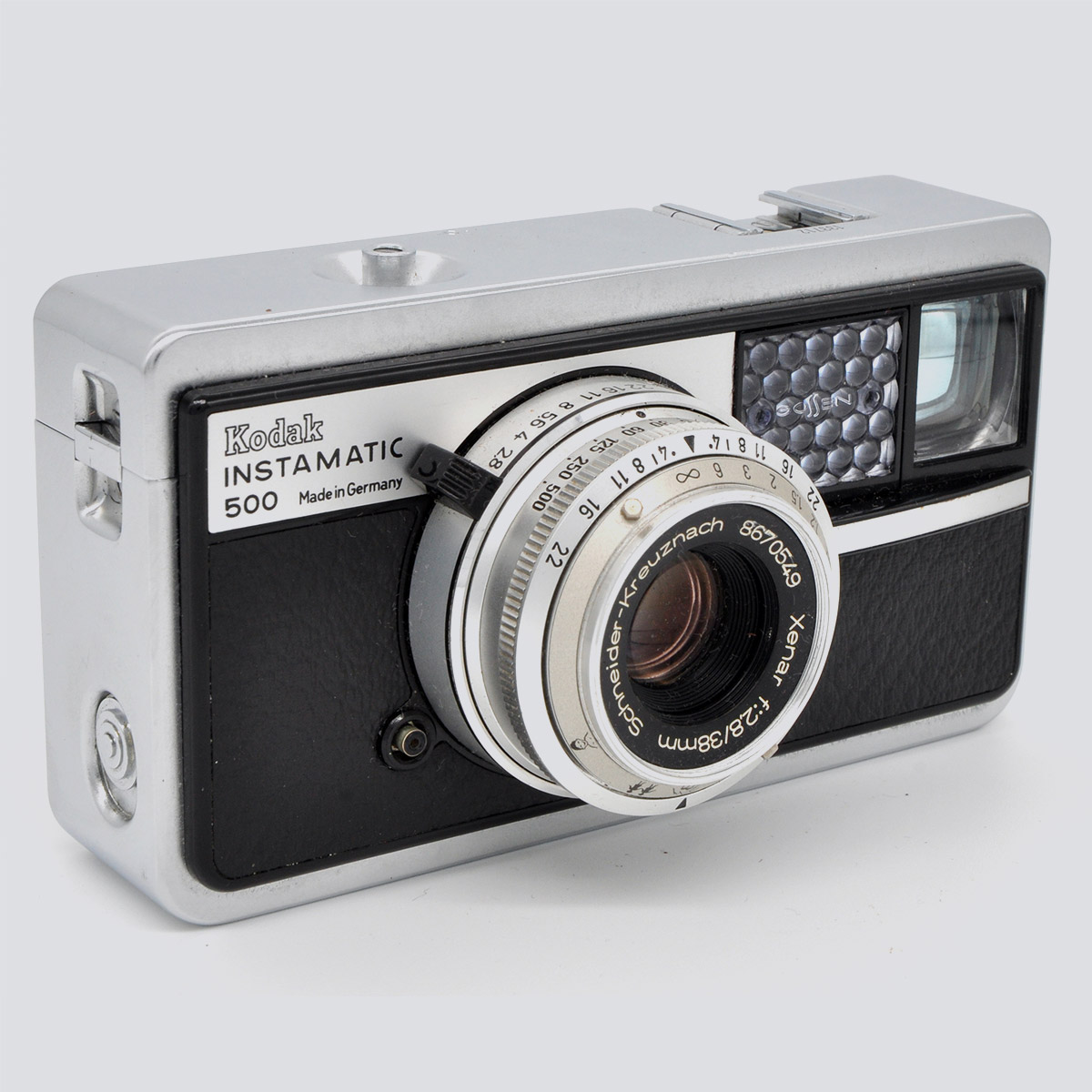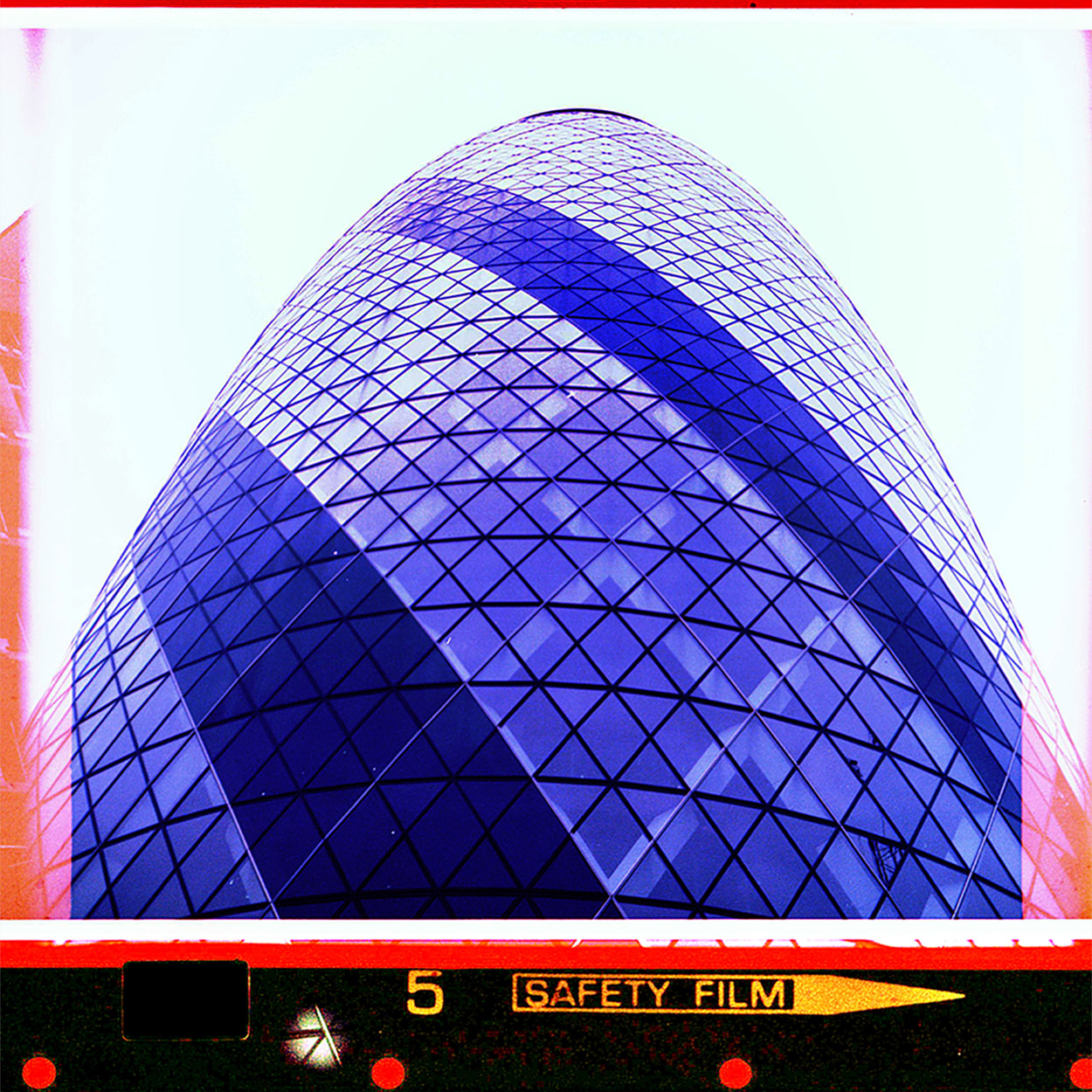Kodak Instamatic 500
Say the word “Instamatic”, and the first thing to come to mind (for those of a certain age) would be the mass produced, ultra-basic, chunky little cameras that were the staple of family and holiday snaps in the 1960s and 70s. Made by the million, the Instamatics used the foolproof 126 cartridge system, taking 28mm x 28mm square images on 35mm film which had just one perforation per frame. Even though the cartridges have long since ceased to be made, I bet many a household has one of these cameras squirrelled away somewhere, they are still a very common find in charity shops and car bootsales, but sadly, the chances of using them are very small. Short of reloading an old cartridge, a process which is elaborate and far from perfect, the only hope is to find an unused film, which will of course be considerably out of date, and possibly wildly expensive. I’ve seen a 30 year old cartridge fetch more than £20 on Ebay, but luckily I managed to pick a couple up for less than a fiver each.
The Instamatic 500 is a cut above the run of the mill point and shoot models, this one has an f2.8 Xenar lens, a built in coupled exposure meter and a Compur shutter with a range of speeds. Mine was yet another bootsale find, and has it’s own very smart leather case with metal trim. To me the camera has a very 1970s look to it, so I was surprised to learn that it was actually made in 1963, it must have looked ahead of its times.
Even though it is nearly half a century old, the built in Selenium exposure meter, which bears the badge of the respected meter manufacturer Gossen, still works perfectly. There’s a lot to be said for systems that don’t require batteries, which can be the bane of the collector-photographer’s life, the two main problems being sourcing obsolete batteries, and the damage done by old ones that have been left in the camera to leak and cause corrosion.
Despite being marked “develop before 1993”, and having spent many years in my dad’s garage, the Supasnaps branded 126 cartridge that I used produced remarkably clean results. Although I could have used mail order for processing, it was easy enough to do it myself, as 126 film fits into a standard 35mm developing tank reel with no problems, and so I used the Tetenal C41 kit, which I am becoming quite familiar with now.
I took the Instamatic 500 with me on a day trip to London, and was able to make full use of the manual settings to take photos in dimly lit tube stations as well as in bright daylight, where I found the iconic “Gherkin” made a tasty composition, especially when framed with a side order of film markings.
The decision to flaunt your format by including sprocket holes, frame numbers or sheet holder marks, is a matter of individual aesthetic choice. I must confess that when I first saw prints from large format negatives that included the slide masks and batch numbers I found it rather irritating “look at me, I use a 10” x 8” camera!” it screamed out at you, but now I’ve grown like this look. The fact that there is a well known best selling app for the iPhone that will add this sort of thing to your digital image confirms that it remains trendy to this day.
Such is the scarcity of 126 film that I decided I would only use half the cartridge in the Kodak, so that I could transfer it into another camera. The following week I finished it off in the Argus Instantload 270, which is also unusually well specified.
I was pleased with the results from this 126 camera, the square format has always appealed to me, perhaps because of its associations with medium format photography, something which as budding photographers, the members of my school photographic society used to aspire to.


